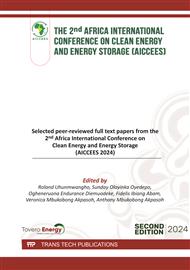p.53
p.65
p.85
p.121
p.141
p.155
p.165
p.175
p.195
Mini-Grid Sustainability Framework and its Application to Selected Mini-Grids in Kenya
Abstract:
This paper presents an indicator-based framework for the sustainability analysis of mini-grids and applies this to a selection of mini-grids in Kenya. Although various frameworks exist, they have been criticised for lack of attention to long-term perspectives, high data needs, prescriptive nature of the attributes and limited user-friendliness. Considering that data availability is a major concern and that data available is qualitative in nature, this paper proposes a set of indicators and a scoring system that can be used with a broad qualitative understanding of the sustainability attributes of the mini-grids. The paper first presents the framework and the scoring system and applies this to the data gathered from the fieldwork in Kenya. The results indicate that the significant variation in sustainability performance of the mini-grids covered and the performance is relatively good in technical and economic dimensions and relatively poor in social, institutional and environmental dimensions.
Info:
Periodical:
Pages:
141-154
Citation:
Online since:
February 2025
Price:
Сopyright:
© 2025 Trans Tech Publications Ltd. All Rights Reserved
Share:
Citation:


